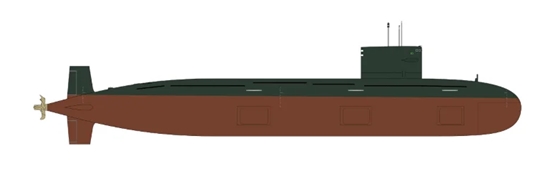
You live in a gated community. One day, a stranger appears. He is from far away but declares himself a near neighbor and says he will therefore be attending all your homeowner association meetings to discuss HOA issues with you, will participate in HOA projects, and will set up some of his own sheds and outbuildings on the property for various personal projects. He asserts transit rights in and through community property and certain vague security rights as well.
Near-Arctic
No wonder there is sudden concern about the Arctic, for that’s what this is about.
The stranger is Red China, which declared itself a “near-Arctic” power and an observer at the Arctic Council—consisting of Canada, Denmark, Finland, Iceland, Norway, Sweden, and the U.S. plus six indigenous groups—the HOA in our allegory. “Near-Arctic” China has wrested observer status from the Arctic Council.
China claims a share of any resources discovered or exploited in the Arctic. It claims the Northwest Passage as free to transit while Canada claims it as territorial water. It has set up facilities in Iceland and Greenland (Denmark) with plans to locate in a Russian settlement on Svalbard (Norway), part of the Spitsbergen archipelago governed by treaty.
Iceland inked an Arctic treaty with Beijing in 2018. Finland rejected China’s attempt to buy an airport in 2018.
Beijing believes polar regions are military high ground that give a strategic advantage to their possessor.
The Brookings Institute says that “China seeks to become a ‘polar great power’ but downplays this goal publicly. Speeches by President Xi Jinping and senior Chinese officials with responsibility for Arctic policy are clear that building China into a ‘polar great power’ by 2030 is China’s top polar goal….
“A head of the Polar Research Institute for China, for example, called these kinds of public spaces [polar spaces] the ‘most competitive resource treasures.’ China’s National Security Law creates the legal capability to protect China’s rights across them, and top Chinese Communist Party officials have suggested China’s share of these resources should be equal to its share of the global population.”
One or the other
In other words, Beijing must be awarded the majority of whatever is discovered and recovered.
“Arctic states are united in the view that they are uniquely empowered to address governance questions due to their sovereignty in the Arctic,” reports The Diplomat. “China’s interest in framing the Arctic as part of the ‘common heritage of mankind’ counters this narrative….”
There will be no way to split the difference between sovereignty and common ownership. It must be one or the other.
The communists are not shy about deploying some gunboat diplomacy to emphasize their points. In July 2024, a “foreign armada appeared off the coast of Alaska…without warning. Four warships from a China Navy Task Group, including a guided-missile cruiser and a destroyer, had entered within 200 nautical miles of American shorelines. It was the latest in a series of Chinese and Russia vessels transiting the Aleutian Islands and the Bering Sea in recent years….”
The Canadian Naval Review expects that by the end of 2025, “China will have built for use in the Arctic Shang3 (Type 093B) Class Nuclear Attack Submarines.” Nuclear attack subs for use in the Arctic no less.
China has four icebreakers; the United States has only two, one of these aged. The communists seem to take this “near-Arctic” nonsense very seriously.
Talk of the U.S. annexing Greenland or Canada is motivated in part by this Arctic security subtext. The proof is in the political reporting. For instance, “Denmark boosts Arctic defense spending by $2 billion after Trump’s Greenland interest.”
And in Canada, “Conservative Leader Pierre Poilievre is pledging, if his party forms government, to build a military base in Canada’s Arctic, buy two polar icebreakers for the Royal Canadian Navy, and double the size of the Canadian Rangers patrol group responsible for upper reaches of the North.”
Anti-inflationary
The RAND Corporation cautions against “inflating” the Chinese threat. It says that “Chinese investments and presence in the North American sections of the Arctic remain fairly limited.”
And yet, even now, we have Chinese spy buoys monitoring U.S. subs in the Arctic. We have their spy balloons traversing Alaska and Canada.
What would the Arctic look like with a greater Chinese presence? Probably like the South China Sea: very ugly, with contrived disputes, armed clashes, bullying and brinkmanship. This fake neighbor needs to be kept as distant as possible. □
James Roth works for a major defense contractor in Virginia.
Also see:
StoptheCCP.org: “China, the Crazy Neighbor Who Just Won’t Leave People Alone”
StoptheCCP.org: “Japan to the Rescue in the South China Sea?”
StoptheCCP.org: “The Spratly Agenda”











